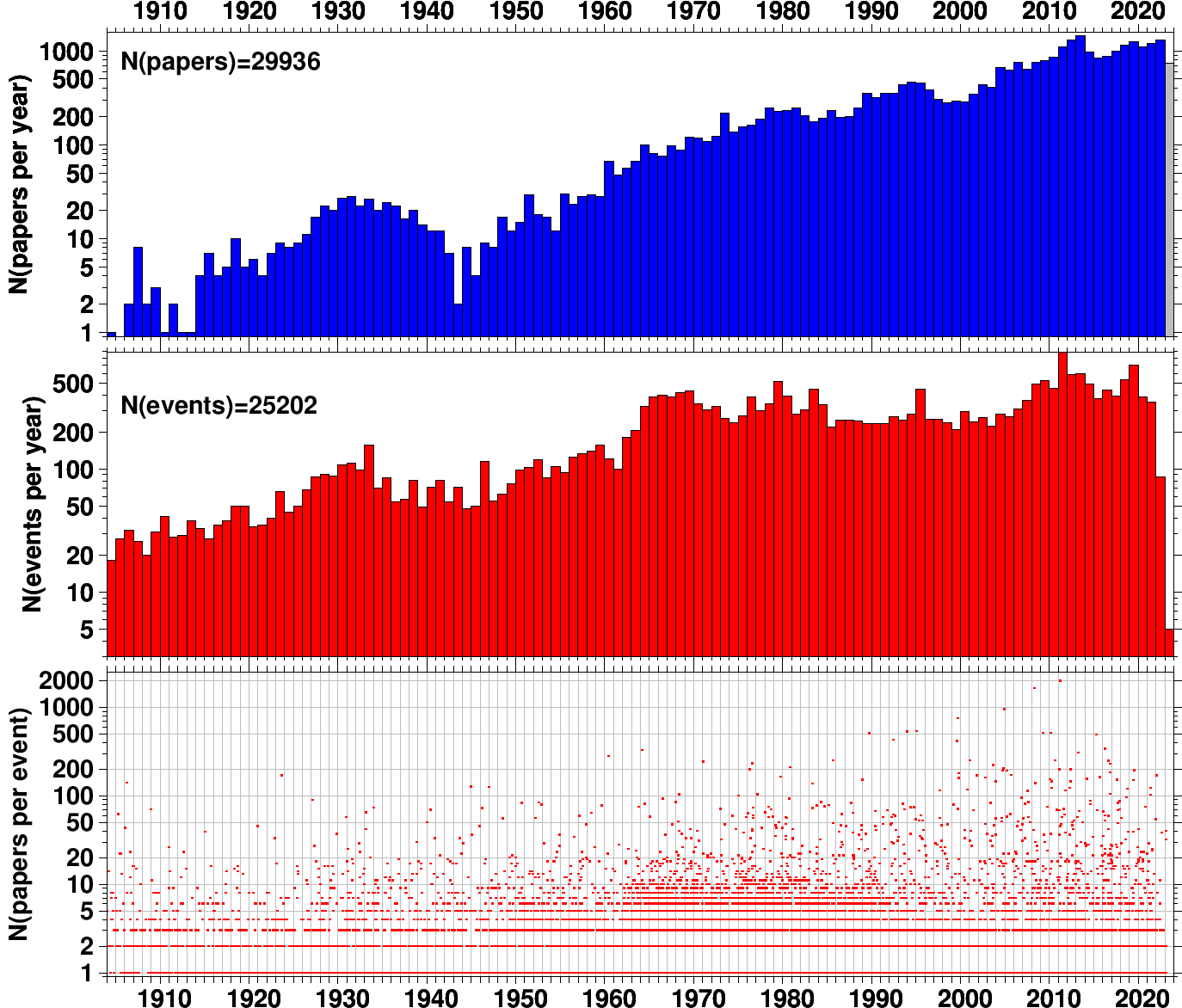Overview of the ISC Event Bibliography
As of , the ISC Event Bibliography includes scientific articles that were published since the beginning of last century and related to seismic events that occurred since 1904 (Fig. 1).
We are working on extending the completeness of the Event Bibliography as far as the past and recent instrumentally recorded events are concerned. We are also updating the Event Bibliography on a monthly basis as soon as the new publications become available.
The majority of seismic events are described in just one or two scientific publications, yet a few events have attracted a large number of articles. A good recent example is the Tohoku earthquake of March 11, 2011 that is described in over 2000 articles.
Table 1 shows the first twenty authors with the largest number of event-oriented articles included in the ISC Event Bibliography. Please note that this number does not include all articles written by each author and by no means is intended to be viewed as an author ranking.
Authors are encouraged to check for missing publications or associations to other events and report such instances using Submit Your Article or Contact Us.
As of , the Event Bibliography database contains over 32,000 references from nearly 500 titles. Table 2 lists the first twenty journals containing the largest number of articles included in the ISC Event Bibliography.
Last updated: 2024-07-18.
|
Table 1. List of the first twenty authors with the largest number of event-oriented articles included in the ISC Event Bibliography. This number does not include all articles written by each author and by no means is intended to be viewed as an author ranking. |
|
Table 2. List of the first twenty journals with more articles in the ISC Event Bibliography. |
Figure 2 shows the spatial distribution of seismic events in the ISC Event Bibliography and the list of the top 50 events by number of associated publications. Unsurprisingly, most of these events occurred in Japan, California, Europe and Central America. For ease of use, we have adopted event codes selected to resemble the event names most commonly used in the literature.



